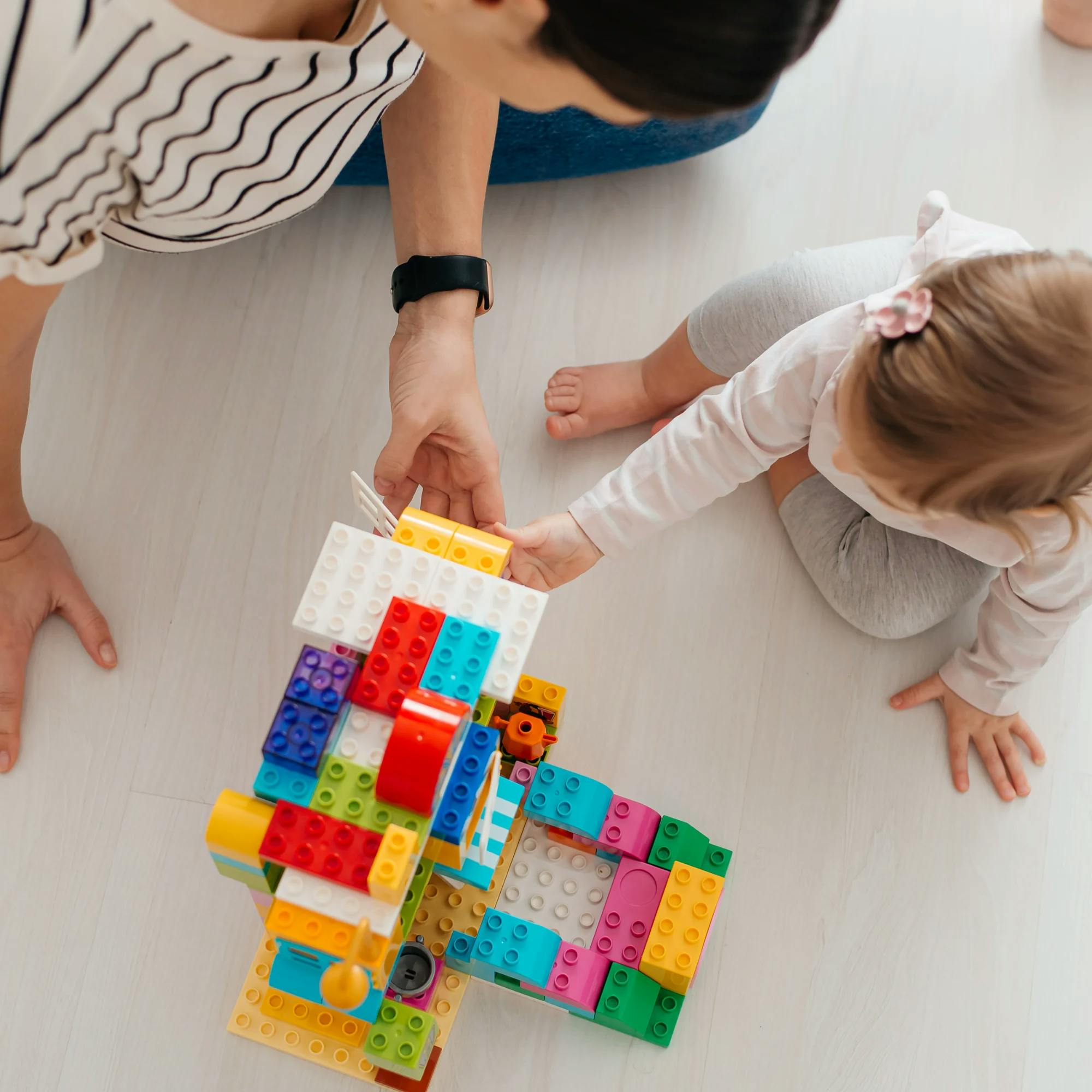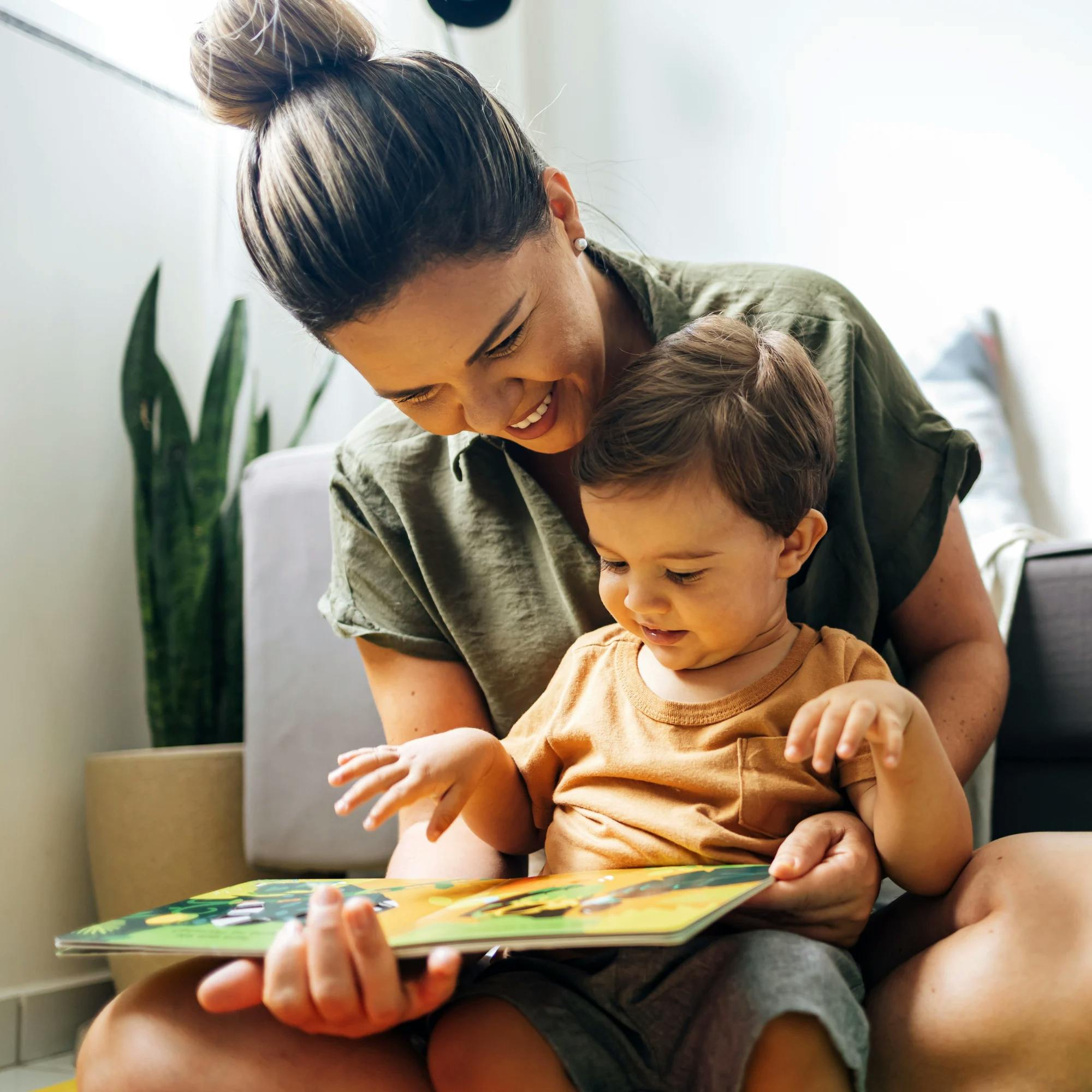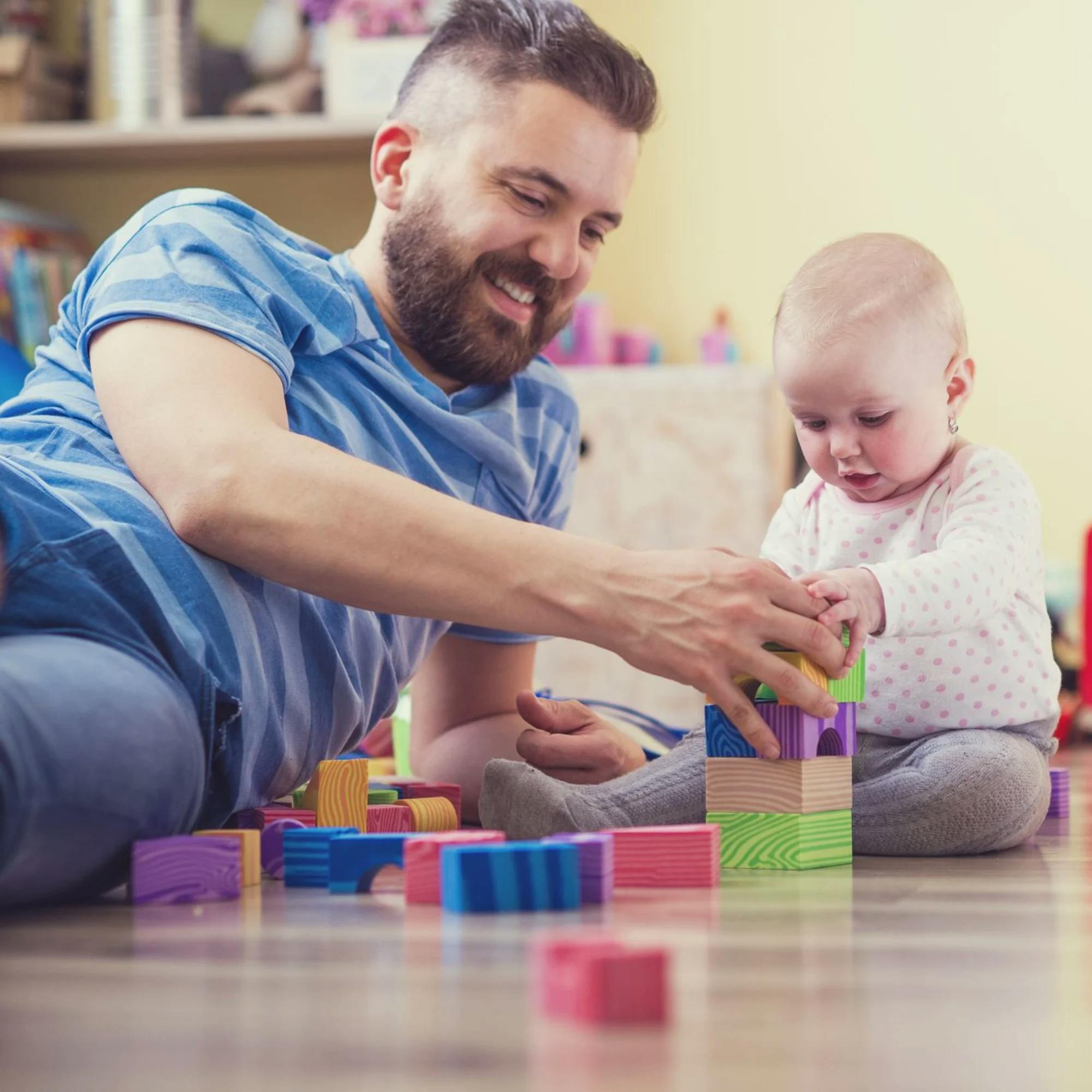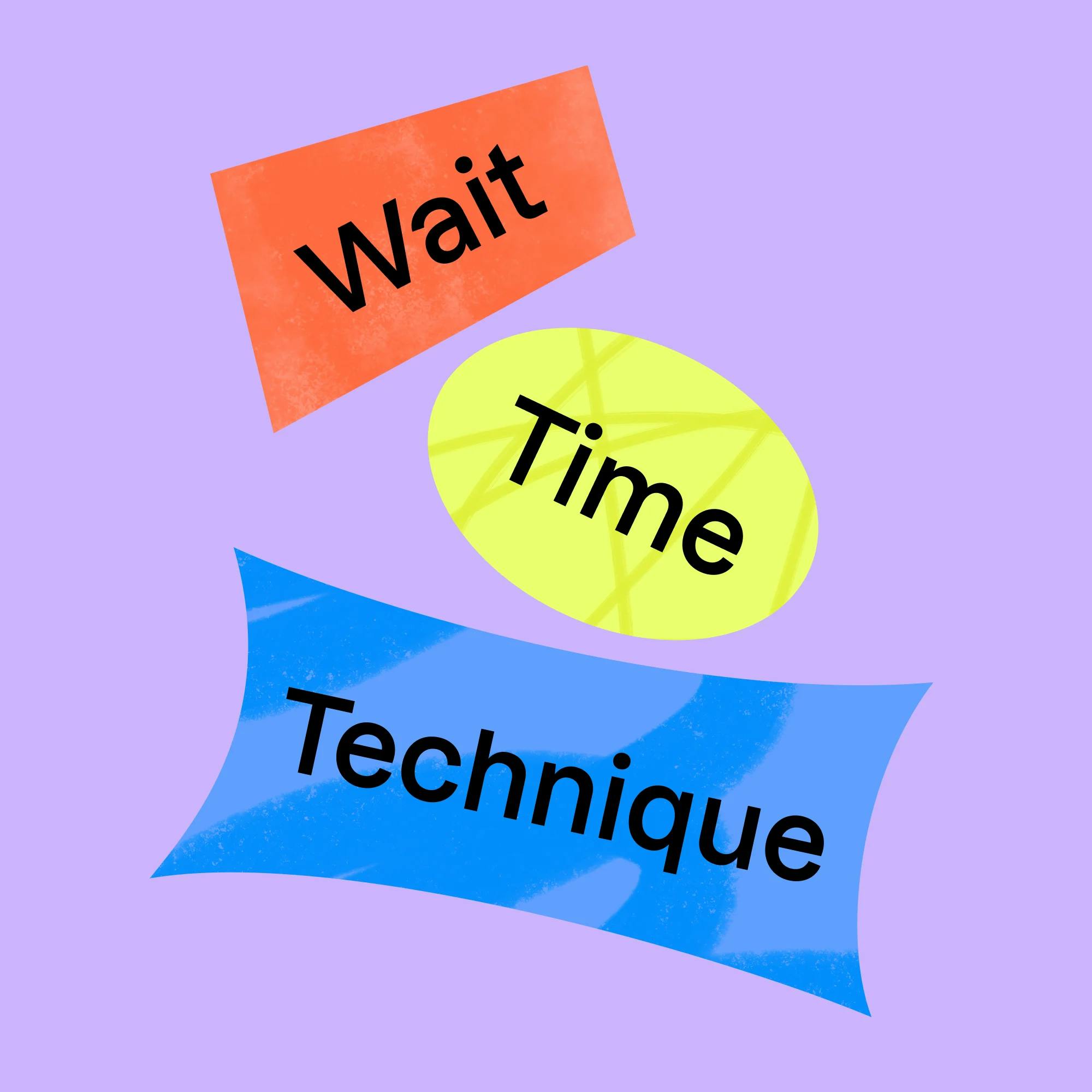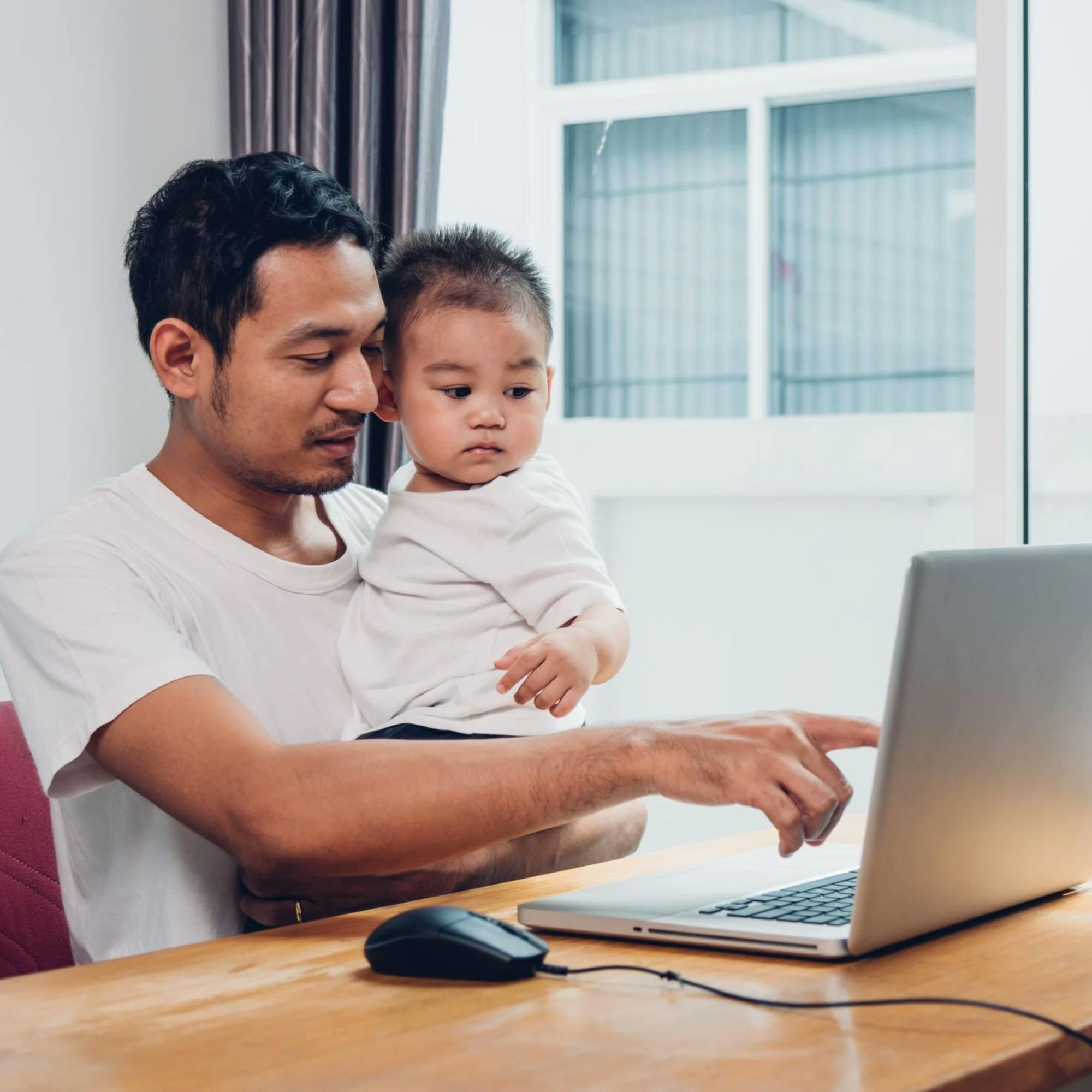When you think about it, it’s pretty amazing how babies learn language. From day one, right at birth, babies begin taking in everything around them. Lights, smells, sounds–there’s a whole lot going on. Very soon, they begin responding to and interacting with their new world.
Babies begin communicating from birth. Those early cries are their way of saying, “I need something!” But when it comes to developing more complex forms of communication, there are several aspects of language development that all have to work together. You can think of them as building blocks. In order to build a strong “structure” to support a child’s communication abilities, we need these language building blocks. The more of these blocks that are in place, the better your child’s communication skills will be.
Let’s look at the four stages of language development, how to tell if your child is learning these skills, and what you can do to help them along.


1 Attention and listening
The foundation of language is attention and listening. These two skills are key to developing basic communication skills.
Babies look at and listen to people and things around them as a way to engage in their world. Whether it’s by looking at their caregiver or glancing up when they hear an airplane overhead, there is so much in our environment that can naturally prompt engagement and communication.
Hearing is an important language building block. For a child to be able to take in all aspects of verbal language, they need to hear all speech sounds at their various frequencies. This isn’t to say that babies who have hearing loss can’t communicate. But hearing abilities are necessary for a child to be able to learn all the speech sounds that make up verbal language.

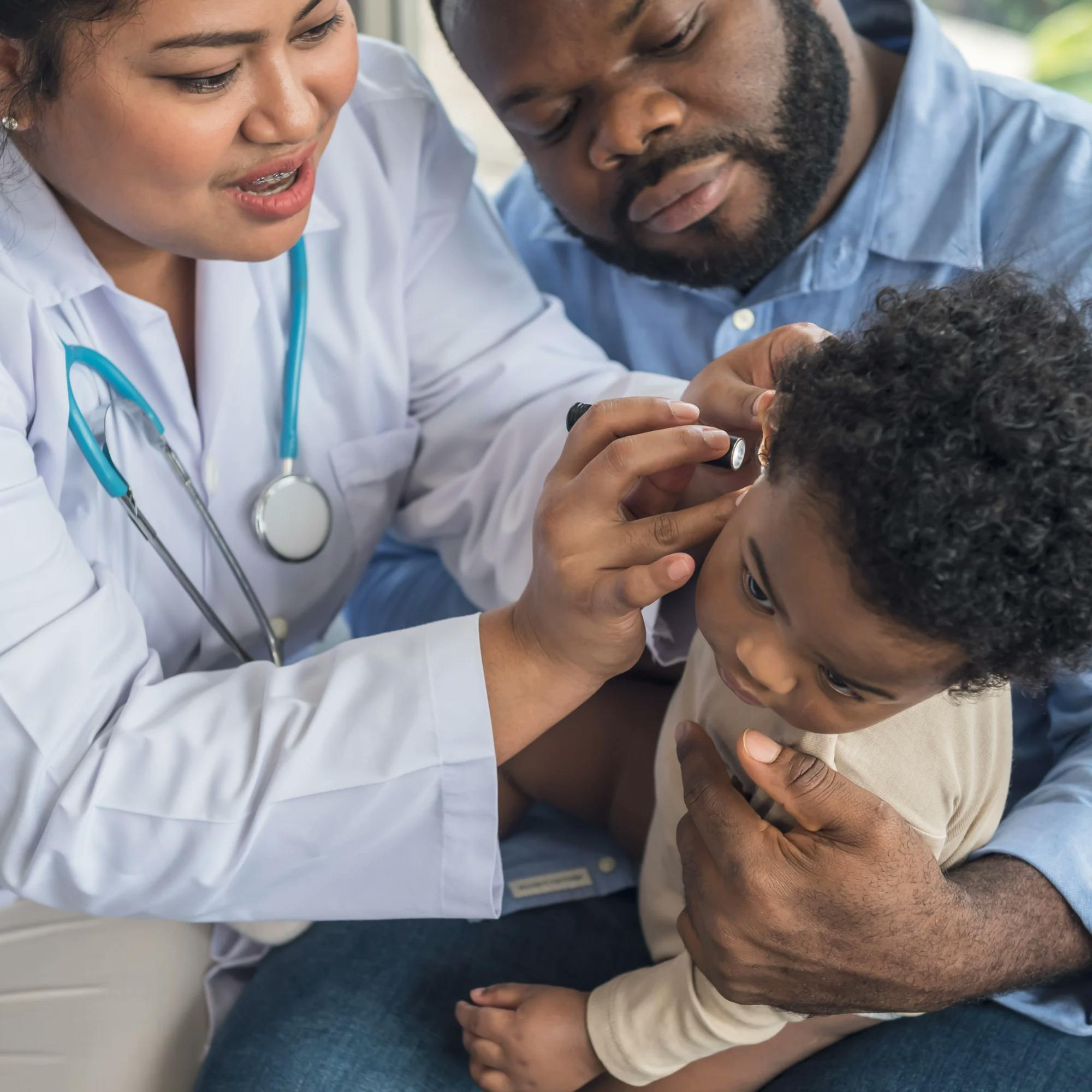
Joint attention is another big part of how babies learn language. Joint attention is when two people are focused on something together, and each is aware that the other person is paying attention to the same thing.
Think about when you read a book with your child. Maybe you’re holding the book open, and your child excitedly points to a picture of a dog. They smile at you and continue to point, as if to say, “Do you see this? I see this!” You respond by saying something like “I see the dog!” You look down at the picture, then back to your child. With this interaction, both of you are aware (1) of what you’re talking about and (2) that you are focused on this item together.
This simple exchange of joint attention is a basic building block for communication.
2 Early interaction skills
The next group of skills needed to develop language are interaction skills. These are ways that a baby or toddler responds to someone else, or tries to gain someone’s attention. Here are some examples:
Using gestures: Examples might include signing for “more,” or pointing to an item.
Imitating: This might involve imitating sounds heard from other people or from animals or vehicles. Imitation can include mimicking gestures, actions done during playtime, sounds, or words.
Making facial expressions: This can be as simple as a smile or a frown, or even making silly faces back-and-forth with a caregiver.
Turn-taking: Turn-taking is how babies learn the flow of communication. Even simple games and activities like peek-a-boo can help teach turn-taking.
Babbling: Babbling is an early form of verbal communication. Babies begin to babble, then, before long, their babbles start turning into words!
Vocalizing: Whether it’s cooing, shrieking with excitement, or an actual first word, continued growth of vocalizations is a huge step in communication development.

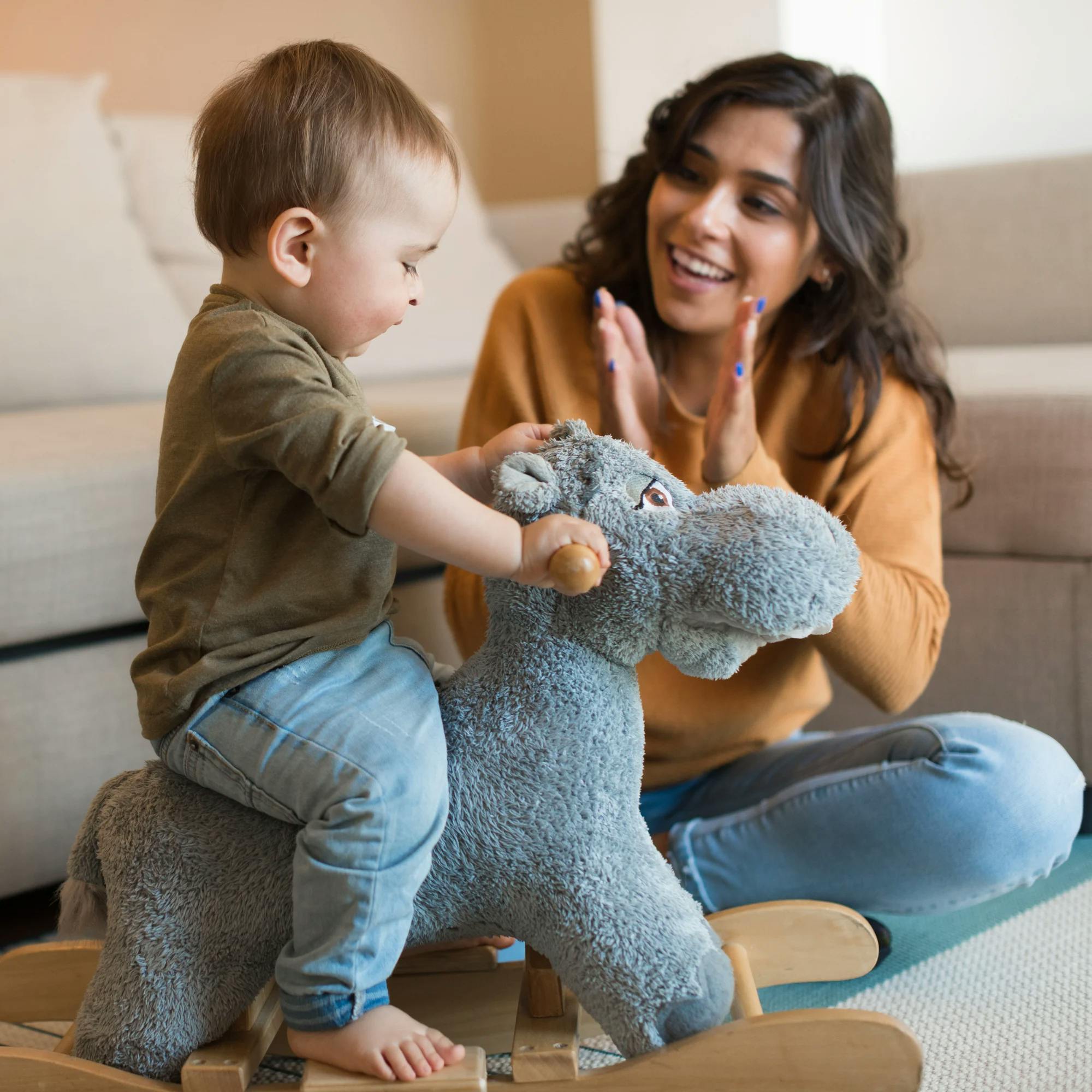
3 Play skills
Play skills are a major building block of language development. It may seem like, well, just simple playing. But for kids, play is one of the most important ways they develop a variety of skills. Kids use play to experience their world, learn new things, and practice communication and social skills.
There are several stages of play that children do as they grow and develop:
Symbolic play. This is when kids use an item and pretend it’s something else. Maybe they push a rock along the ground and pretend it’s a car driving. Or they pick up a banana and place it by their ear as if they’re on the phone. They are using these things symbolically, which is why it’s called symbolic play.

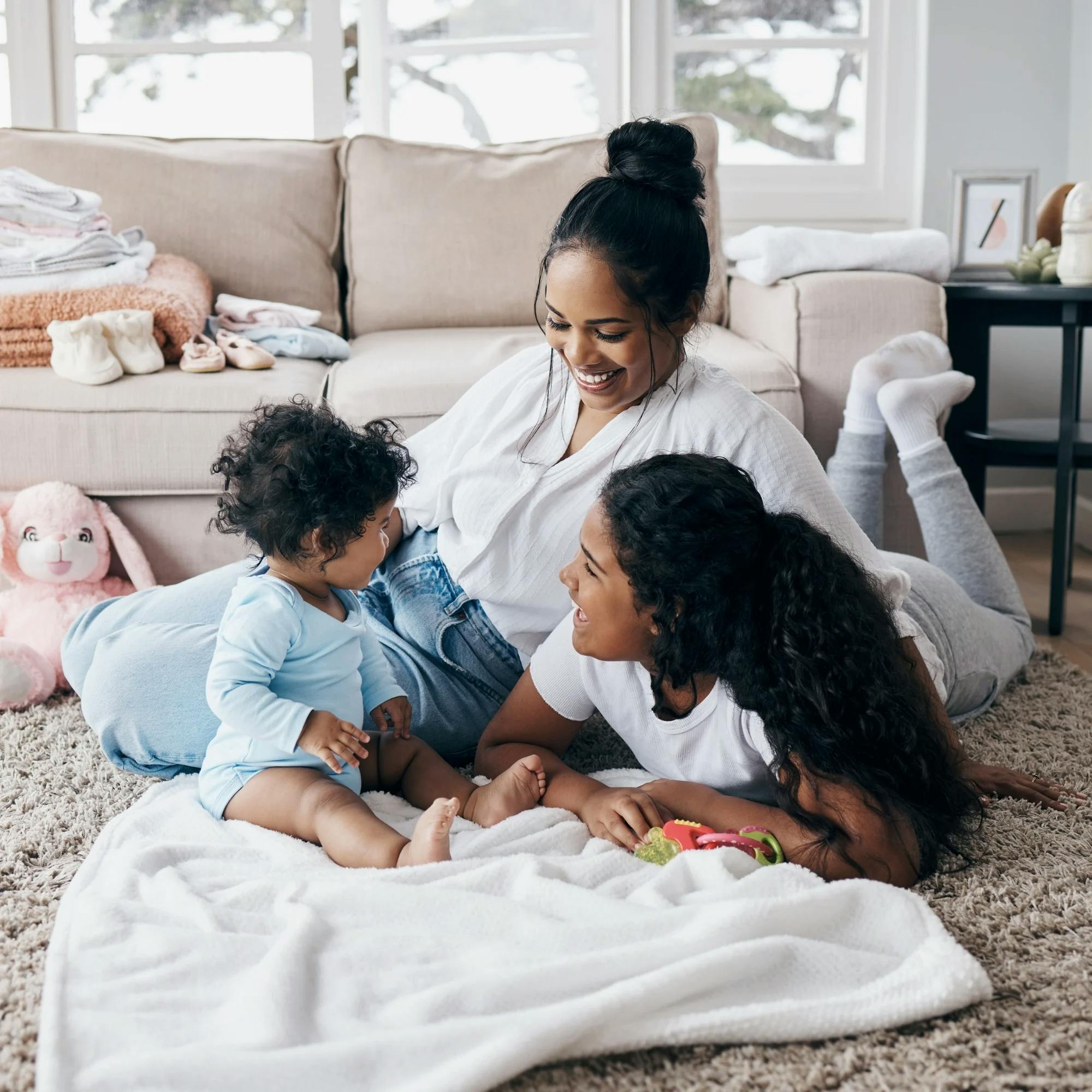
Imaginative play. Imaginative play is when kids create pretend scenarios. Maybe they pretend to be a pirate or princess, or they play doctor or house. As kids get older, their thinking and language skills allow them to explore this type of engaging play.
Imaginative play is the perfect scenario to build language skills! You can teach your child new vocabulary words and practice asking and answering questions: “Where is the pirate sailing in his ship?” “Why does the baby need to go to the doctor?”
Functional play. Functional play refers to using toys for their intended purpose. Now, kids can play with toys any way they want! But when you see your toddler starting to use toys purposefully, you’ll know they’re growing in their play abilities. For example, at first, a baby might pick up the pieces of a puzzle and bang them together. But over time, they’ll start to try putting the puzzle together. This is functional play.


4 Understanding
As toddlers continue growing in their communication skills, you’ll see their receptive language–which refers to their understanding of language–begin to explode. When you give a direction like “Go get your shoes!” and your child responds for the first time, this is a big moment!
As toddlers learn more and more vocabulary, they’ll be in a good position to start using these words to talk. The first word typically happens around age 12 months. By 18 months old, toddlers are starting to use words more purposefully and for a function. For example, they’ll start to ask for things using words. They may ask “Cookie?” or “Ball?,” which shows they’re learning that words can be used for a purpose.
Starting to talk is an exciting milestone! But again, children have to learn and understand words before they begin using them independently. For example, if a child’s going to ask for a cookie, they have to understand what that item is called. One important way kids learn language is through language modeling from their parents and caregivers.

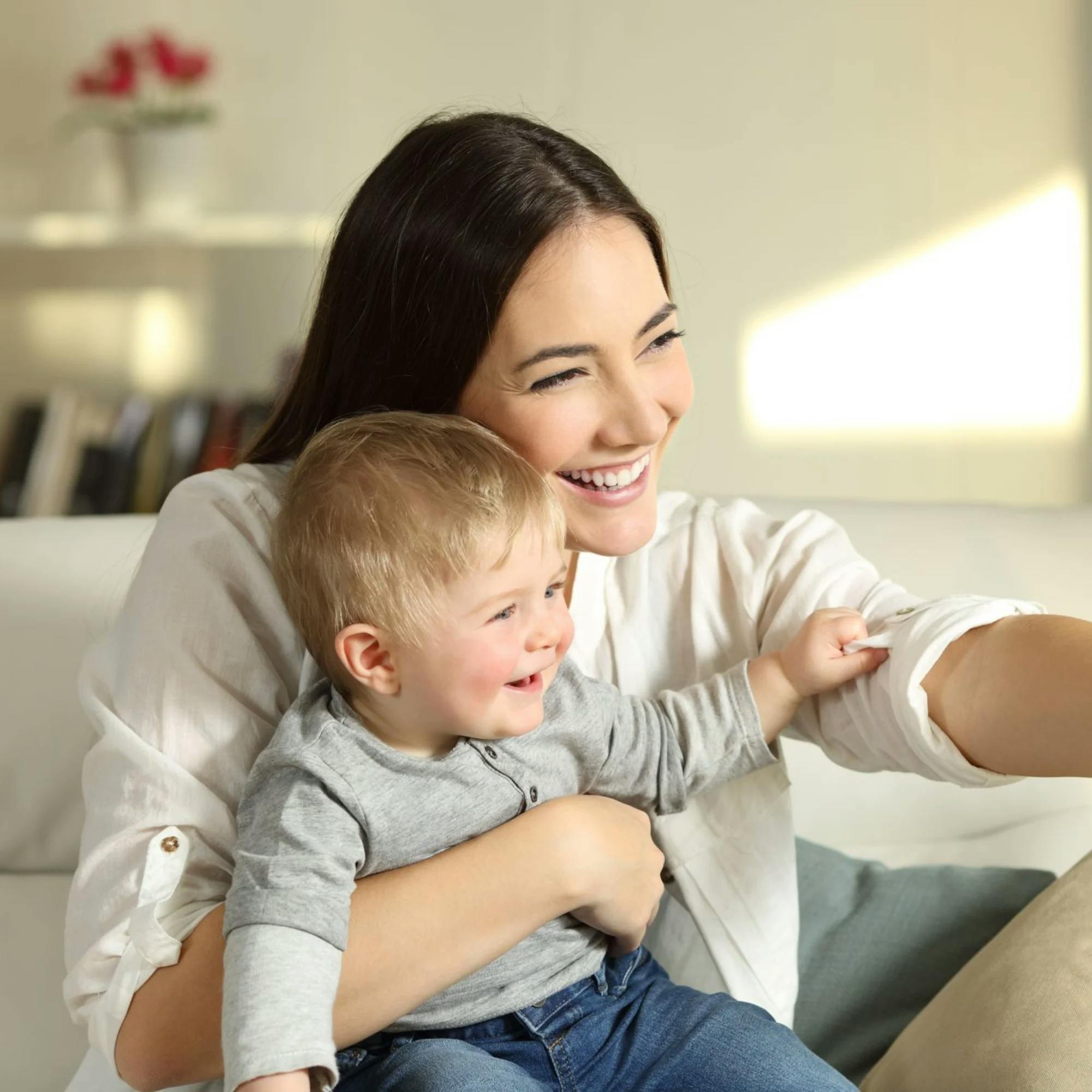
Is your child on track with their language development?
As your child grows and learns these language skills, they’ll be set up for successful communication–now, and throughout their life. Strong communication skills help kids express what they need, share their thoughts, and form relationships with others.
If you’re wondering if your child is on track with their development, take some time to learn the speech and language milestones expected for their age:
You can also take our free online speech and language screener, with questions tailored to your child’s birthdate. If you have questions about your child’s development, we’re here to help!
How Expressable Can Help
Concerned your child isn't reaching age-expected milestones? Looking for communication support from a professional? Expressable is a national online speech therapy practice serving children and adults. We treat all major areas of communication and feeding, offer flexible hours including evenings and weekends, and accept most major health insurance plans. We’re proud to have earned more than 3,000 5-star reviews from our clients (4.9/5 average).
Our therapy model is centered on parent and caregiver involvement. Research proves that empowering caregivers to participate in their loved one’s therapy leads to better outcomes. That’s why we combine live, 1-on-1 speech therapy with personalized education and home practice activities for faster progress.
Communication is more than words. It’s how we share how we feel and show who we are. We’re here to help you or your child do just that.

 Abby Barnes, M.S., CCC-SLP
Abby Barnes, M.S., CCC-SLP